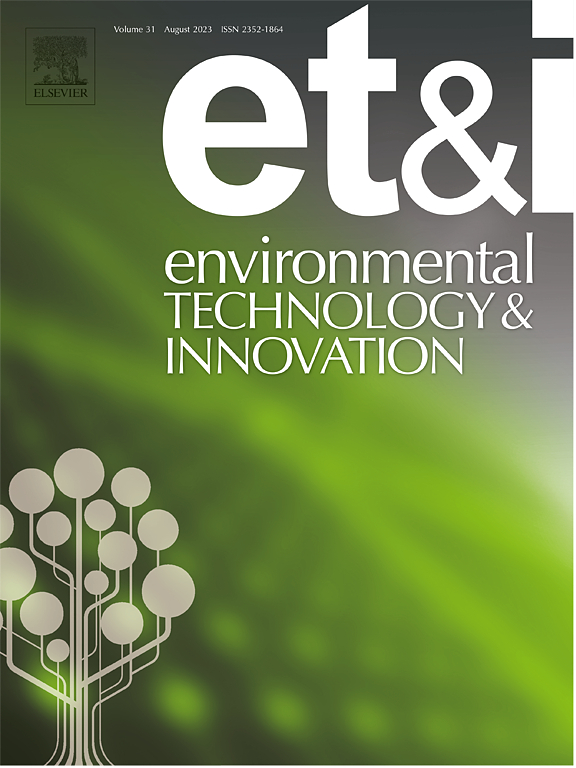Effect of multi-stage inoculation on the efficiency of hyperthermophilic composting of cationic polyacrylamide-containing sludge
IF 6.7
2区 环境科学与生态学
Q1 BIOTECHNOLOGY & APPLIED MICROBIOLOGY
引用次数: 0
Abstract
The scale of sewage treatment in China currently grows consistently, leading to a rapid increase in sewage sludge production. Cationic polyacrylamide (CPAM) is widely used to dewater sewage sludge. However, during land application and landfill processes of dewatered sludge, a considerable amount of CPAM is released into the environment, posing severe pollution risks. This study explored the effects of different inoculation strategies for Bacillus licheniformis, Calditerricola satsumensis, and Bacillus subtilis on the efficiency of hyperthermophilic composting (HTC) of CPAM-containing sludge. The results showed that multi-stage inoculation significantly enhanced the efficiency of HTC and removal rate of CPAM. Compared with the non-inoculation group, multi-stage inoculation extended the hyperthermophilic phase from 7 to 11 days, increased the maximum temperature from 82.06°C to 85.16°C, and increased the removal rate of CPAM from 72.54 % to 84.90 %. The analysis of seed germination index (GI) and fluorescence excitation-emission matrix (EEM) spectra both revealed that multi-stage inoculation promoted the decomposition and humification of organic matter. Illumina MiSeq sequencing indicated that multi-stage inoculation significantly improved the diversity and richness of the microbial communities. Firmicutes, Actinobacteriota, and Proteobacteria were the predominant bacterial phyla, while Bacillus, Calditerricola, and Sporolactobacillus were the key functional bacterial genera involved in CPAM degradation. To the best of our knowledge, this is the first study to enhance the removal efficiency of CPAM by HTC using a multi-stage inoculation approach. These findings provide valuable new strategies for the efficient treatment of CPAM-containing sludge.
求助全文
约1分钟内获得全文
求助全文
来源期刊

Environmental Technology & Innovation
Environmental Science-General Environmental Science
CiteScore
14.00
自引率
4.20%
发文量
435
审稿时长
74 days
期刊介绍:
Environmental Technology & Innovation adopts a challenge-oriented approach to solutions by integrating natural sciences to promote a sustainable future. The journal aims to foster the creation and development of innovative products, technologies, and ideas that enhance the environment, with impacts across soil, air, water, and food in rural and urban areas.
As a platform for disseminating scientific evidence for environmental protection and sustainable development, the journal emphasizes fundamental science, methodologies, tools, techniques, and policy considerations. It emphasizes the importance of science and technology in environmental benefits, including smarter, cleaner technologies for environmental protection, more efficient resource processing methods, and the evidence supporting their effectiveness.
 求助内容:
求助内容: 应助结果提醒方式:
应助结果提醒方式:


